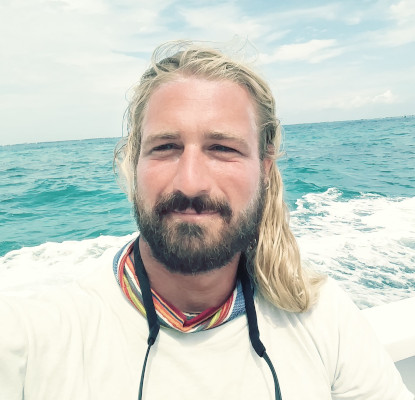Michael Doane
My research is multifaceted, relying on molecular tools to answer ecological questions from the marine environment. These research questions span several marine systems, including host microbiomes, fish diversity and habitat relationships, and microbial oceanography.
1) Elasmobranch microbiomes Sharks and rays, like all other animals, are covered in microbial hitchhikers, termed the microbiome. This community of tiny organisms are critical to the normal functioning of these animals, but our understanding of how this relationship persists remains unknown. I use next-generation sequencing tools to examine the microbiome patterns, i.e., what microbes are there and how many of them are present. This work aims to uncover drivers that create the microbiome diversity patterns in these animals, including across spatial and temporal scales and across evolutionary relationships. Some of the shark species I have worked with include common thresher sharks (Alopias vulpinus), leopard sharks (Triakis semifasciate), whale sharks (Rhincodon typus), large-toothed sawfish (Pristis pristis), and tiger sharks (Galeocerdo cuvier).
2) Fish biodiversity and habitat relationship I use molecular tools to investigate the presence of marine fishes, both cartilaginous (i.e., sharks) and bony fishes, in what has become termed eDNA studies. Using genetic markers, I profile fish communities for better biodiversity assessments. This approach complements other survey approaches, enhancing species detections and is sensitive enough to detect changes in patterns over small spatial scales. I use this approach to study spatial and temporal trends in fish communities from remote marine regions such as the Great Australian Bight and Norfolk Island
3) Microbial oceanography Microbial communities living in marine water columns are instrumental in global processes, including atmospheric gas production, nutrient cycling, and carbon sequestration. How microbial life influences these processes is of limited understanding. My research focuses on characterizing microbial communities from these environments and investigating diversity patterns across physical and chemical oceanography gradients. I am interested in understanding how these microbial communities interact with one another to form community structure which is hypothesized to be important for mediating these critical global processes.
